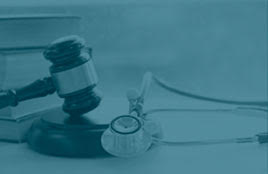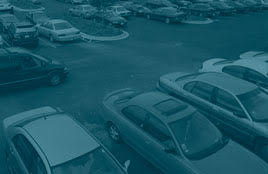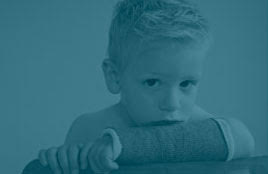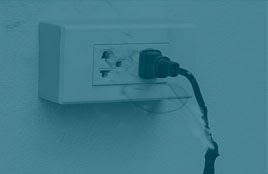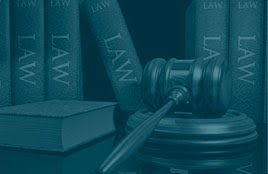In the era of newborn identification – using banding, barcodes, and all of our sophisticated electronic gadgets, one would think that the issue of misidentification of newborns had long since passed. Unfortunately, this continues to be an issue. The report on the Pennsylvania Patient Safety Authority website, based on error reports made from healthcare facilities to the Safety Authority, indicates that identifying newborns in the hospital, and avoiding errors through misidentification, continues to be a concern.
This area has always been of special interest to me. Up until 1998 (and for 18 years before that) I had worked with the newborn and pediatric population. In fact, I had been a Head Nurse of various Neonatal Intensive Care Units, Pediatric Intensive Care Units, Pediatric Units and Newborn Nurseries since 1985. Reduction of error, as it pertains to this vulnerable population has always been in the forefront. There have been special identification bands for newborns for more than 20 years. How then, in this sophisticated society, can this still be an issue? As with all things that involve a lot of humans and a lot of moving parts, there will always be areas for improvement. Personally, I was a bit of a stickler for patient safety issues such as newborn identification. (The charming endearing nickname I heard given to me by some of the nursing staff, “Attila the Hun”, and some nicknames I couldn’t mention, gives you an idea of how I approached supervising the nursing staff in patient care – my first brush with Law came as I testified at trial as a Nursing expert in Newborn Care).
As I discussed in previous blogs, patient safety begins with the most basic concept of accurately identifying the patient. A newborn can pose very special problems in this regard. First off, they can’t tell you who they are. Secondly, if they have the same birthday as another patient and or the same last name, this can be a problem. Multiple births are problem. Baby boy Smyth and baby boy Smyth born minutes apart can become almost indistinguishable. (Take this from the mother of identical twin boys who spent the time in my very own NICU-no there were never mistaken, see ‘Attila’ supra) Finally, unless you have a baby with a tremendously distinguishing feature-think of that newborn with that amazing head of hair at birth-most newborns look fairly similar.
What can go wrong when newborns are not accurately identified? The drama of possibly one child going home with the wrong parent is something of television, although there is documentation of this in 1995 when two Virginia newborns were switched at birth and went home with the wrong parents. More commonly, mistakes in identification result in more common things such as, a child receiving the wrong formula or the wrong medication, a child being breast-fed by the wrong mother, lab work being drawn or misidentified, or a procedure being done on the wrong child such as a circumcision. These are very real problems for which healthcare providers today are looking for very real solutions.
The Joint Commission on Accreditation of Hospitals recommends the use of at least 2 identifiers, such as a patient’s name, date of birth or medical record number to identify patient. This is the basis for sound policy and practice in identification of newborns. Sounds simple? The health care provider has to check for two things that will identify this newborn – name, ID bands, medical record numbers, etc.. So why are we still experiencing errors?
Surprisingly, when the records for reported events to the Pennsylvania Patient Safety Authority were reviewed, for a two-year period, the total number of “misidentified events” for 2 years (January 2014 through December 2015) was 1234. This was arithmetically determined to mean a rate of misidentification of newborn resulting in reportable events of 1 to 2 events per day. In Pennsylvania, this impacts 4.6 newborns for every 1000 births or one newborn for every 217 live births in Pennsylvania.
The “seriousness” of these events should be addressed. Only 5 events were reported as “serious events”, these were events in which breastmilk was given to the wrong patient, or a circumcision was performed without consent. No harm or unsafe conditions were reported with the remainder of the events.
The newborn misidentification events were further broken down into the types of events:
- Procedures-examples of this included mislabeling of cord blood, and two baby girls with the same name had an x-ray was ordered on the wrong patient, but was performed on the correct patient.
- General misidentification events-examples of this included a newborn who did not have an identification band on (it was taped to the bassinet), a newborn who had the wrong identification band, it contained the right name but another patient’s birth date and the staff had used it for several days, and when attempting to draw blood on a NICU patient a phlebotomist noted that the baby’s wristband had a different name on it and it turned out the baby had the wrong band on.
- Medication events-examples of events include two patients with the same last name ordered antibiotics meant for the other patient, and Lasix ordered for the wrong baby in the NICU with a similar last name.
- Breastmilk errors-examples include a newborn baby given to the wrong mother for breast-feeding, and a newborn fed breastmilk that was from another patient with the same last name.
What Is Going On Out There In Healthcare To Help Avoid Misidentification For Newborns?
- Changing from the old identifier of “baby boy” or “baby girl”
If 2 babies have the same last name, putting “baby boy” or “baby girl” in front of that name does nothing to distinguish one child from another. Some facilities now incorporate the mother’s name into the identification, such as “Jane’s boy, Smyth”. Some hospitals have special procedures for ‘like sounding’ or the same name; hospitals are standardizing practices for banding, barcoding, and identification of breastmilk and blood collection.
- Actually verifying the newborn using 2 “identifiers” such as name and date and time of birth. Healthcare providers are encouraged to check for patients’ identification two different ways prior to entering information for medications or lab work or procedures. It is suggested that children with similar sounding names or the same names not be placed right next to each other in the nursery. There may also be small signs to warn the caregivers that there are two children with the same name in the nursery.
- Labeling errors of Breastmilk, blood specimens and lab work can lead to misidentification and create a safety risk and potentially inappropriate treatment. Barcoding labels for breastmilk, and using quality labels that don’t smudge/fall off in the freezer have been used to assure that breastmilk isn’t given to the wrong child. Special lab work labels for the smaller vials of blood, versus labels that were meant to fit adult vials, are used.
- Newborn identification bands. Usually, there are two bands on every newborn one on a newborns wrist and one on the ankle. The bands contain the name, date of birth, medical record number and some other identifying information. There may also be barcodes on the bands that can be scanned prior to any interaction with the healthcare system. Unfortunately, wristbands sometimes go missing or are removed so that a procedure may be performed. Staff is encouraged to replace the ID bands immediately if the information on them is not complete or does not appear on both the arm and ankle.
Newborn identification is challenging and will continue to be challenging as long as there are so many human beings involved in the process of providing care for them. Misidentification of newborns has resulted in things as simple as a child “almost” receiving medication they should not have, to discharging a newborn with the wrong parent. The Healthcare system can try to put policies and procedures in place regarding banding, naming, barcodes and signs. The surest way to make sure that newborns are not misidentified is for the healthcare providers to perform the identification process as it was designed to be done-looking at two different forms of identification on the newborn in order to make sure that who you are looking for is who you get.

